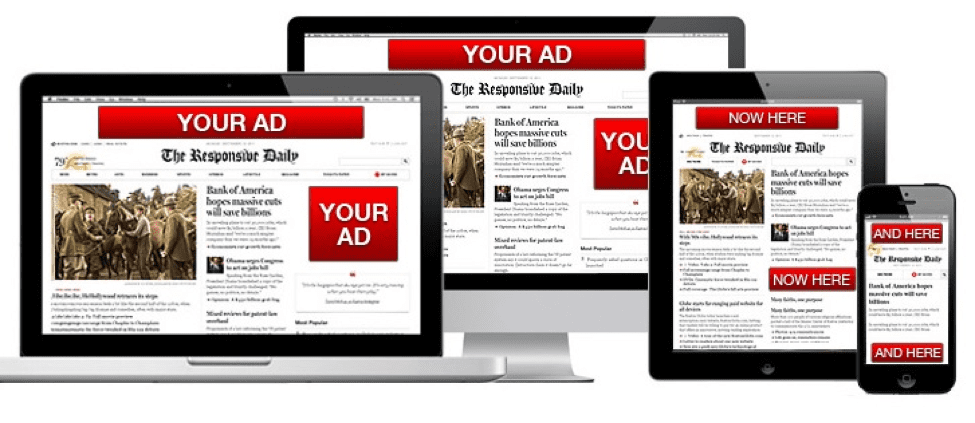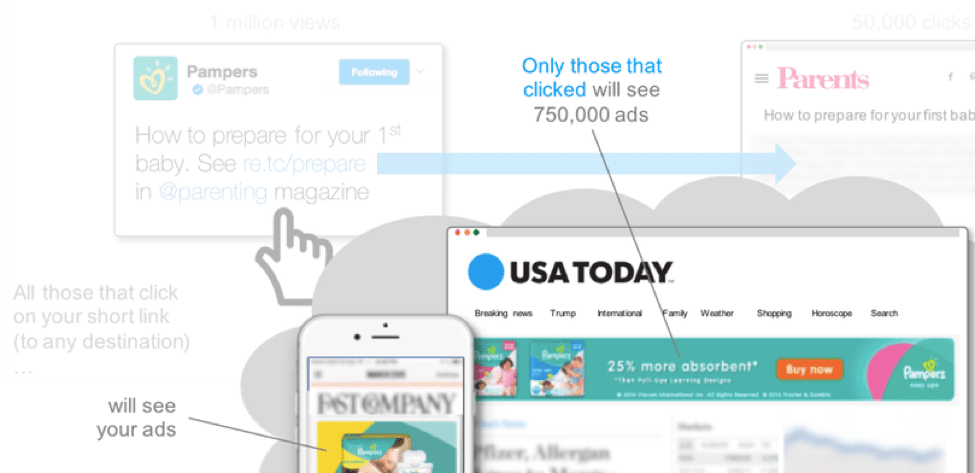Review how link retargeting can help improve your reach and potential site visitors
As the new year gets into full swing, ecommerce businesses and entrepreneurs look to find the latest trends in order to keep up with the ever-evolving world of technology, and solve any challenges they as a business might face. One of the biggest challenges to date, is reaching new online customers, and fast. Targeting the right consumers, at the right time, can be tricky in an online world where consumers are bombarded with advertising that isn’t always relevant to them. While getting new customers to find your website is unfortunately not an exact science, one recent trend looks set to help businesses out in this regard, and it’s known as link retargeting.

What is link retargeting?
Those who have already delved into the world of online marketing will know that basic retargeting occurs when a consumer lands on a website and looks at a specific product, is then served with banner ads of the same or similar product when they leave that website and browse others. The website that was originally viewed places a cookie on the browser of the consumer, and when they visit other websites afterwards, they are served with the relevant banner ads in order to keep that product from that store top of mind. Retargeting is a highly successful marketing strategy, known to be 76% more successful at getting click-throughs than normal display ads.
While this strategy alone is successful, link retargeting is a new online marketing tool that allows a business to do this not only with consumers who have visited their website, but also with any consumers who have clicked on any link they have provided anywhere online. Link retargeting allows businesses to target consumers that have never been to their website before, and serve relevant ads to them. This is done by using a link shortener tool to place the retargeting cookie when directing a consumer to a piece of content, whether it’s on the business’s website or a third party one.
What can link retargeting be used for?
As personalization has become increasingly popular amongst consumers, companies are fast catching onto the trend. According to Invesp, 53% of online shoppers feel that a brand who offers personalized recommendations provide a more valuable service, and 61% of online marketers understand the importance of personalization, but only 51% know how to go about it. With link retargeting, marketers can provide personalized ads to not just their current site visitors, but also to consumers who may be interested in their product.
It can be difficult for businesses to tailor ads to different audience members without knowing too much about them. For example, if a home brand wants to advertise their newest range of kids dinnerware, but only to parents whose children are at the stage of learning how to eat with a knife and fork, they need to segment their audience instead of showing the advert to each and every parent subscribed to their newsletter. When a consumer is shown an advert that is related to their current needs, they’re more likely to click the advert and make a purchase. Below are the ways in which you can implement link retargeting.

With link retargeting for email, a business can share a piece of content within their email newsletter that’s relevant to parents with toddlers learning how to use utensils, and when these parents interested in that topic click the link, (that includes the retargeting pixel code and the advert’s cookie) they will be segmented into a specific audience for the brand, and be retargeted with the correct advert the next time they browse online.
Similarly to email, link retargeting for content allows a brand to use content to segment their audience into relevant groups in order to better serve personalized ads. If a brand wants to serve an advert only to a specific section of their audience, they can place a shortened link that includes the retargeting pixel to an article that this part of their audience would be interested in. The link can either be placed on their website, a partner’s website, or on social media, and as soon as interested consumers clicks on the link to read that piece of content, the brand will know to follow and target only those consumers with personalized ads or sponsored posts online.
Link retargeting for search, allows a brand to run a search campaign specifically to people who have chosen to click on a link from a Google search result. By placing a shortened link with the retargeting pixel to a piece of content that comes up through a relevant Google search, all readers who show interest in that result and click that link will be retargeted with the relevant banner ads at a later stage. A specific audience is therefore narrowed down based on their Google searches. The link can be directed to either content on the brand’s site or an affiliate’s site.
Final thoughts
Link retargeting technology allows marketers to do two very important things; segment their audience into more targeted groups and in turn produce more personalized ads to relevant consumers. Consumers are far more likely to become customers after being exposed to your brand through personalized retargeting ads, than trying to reach them via general social media posts and online content that they may or may not see. Link retargeting as a tool supplements a general retargeting strategy to make a business’s marketing efforts more focused, and targeted towards consumers who will find their product or service interesting.






